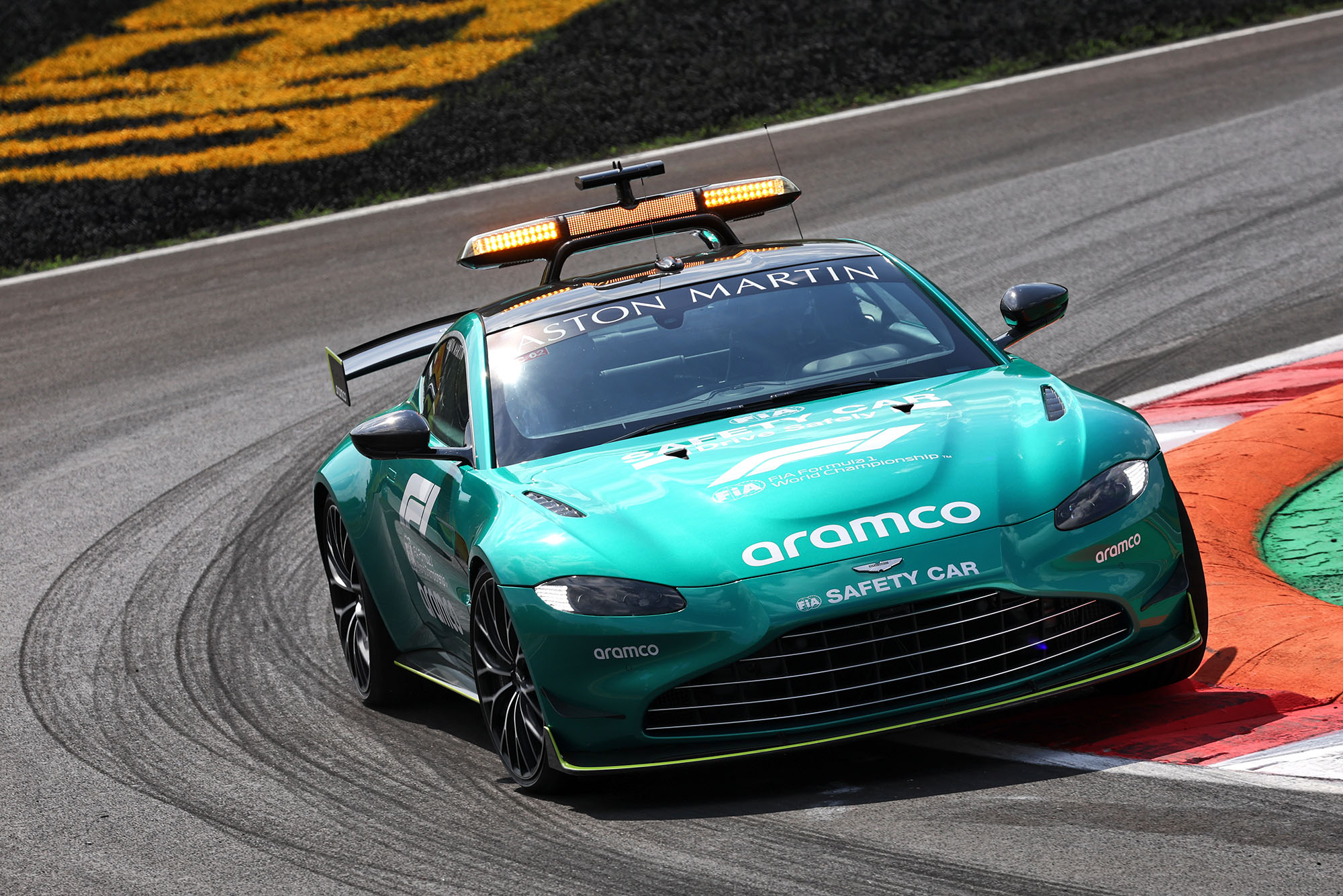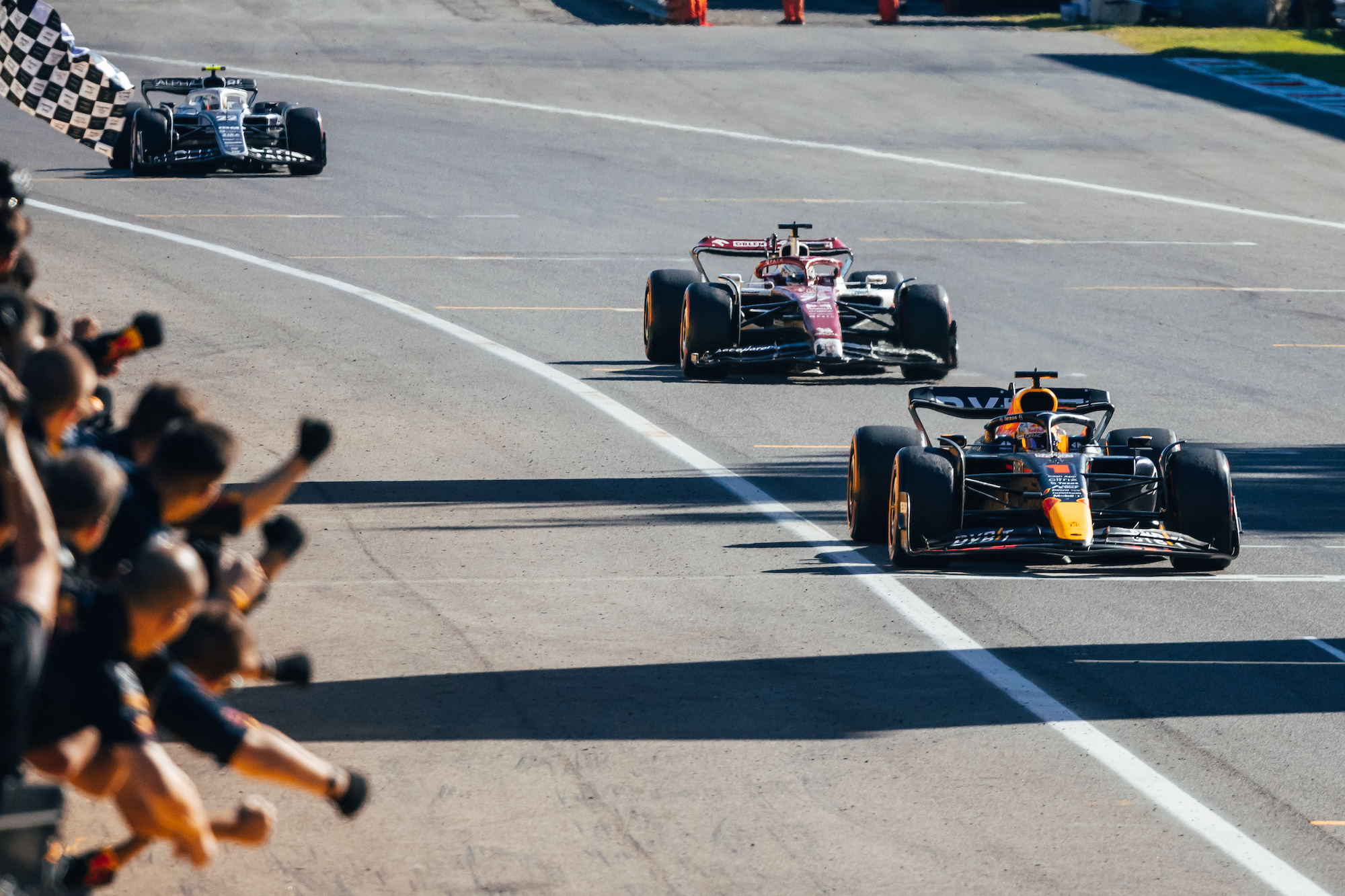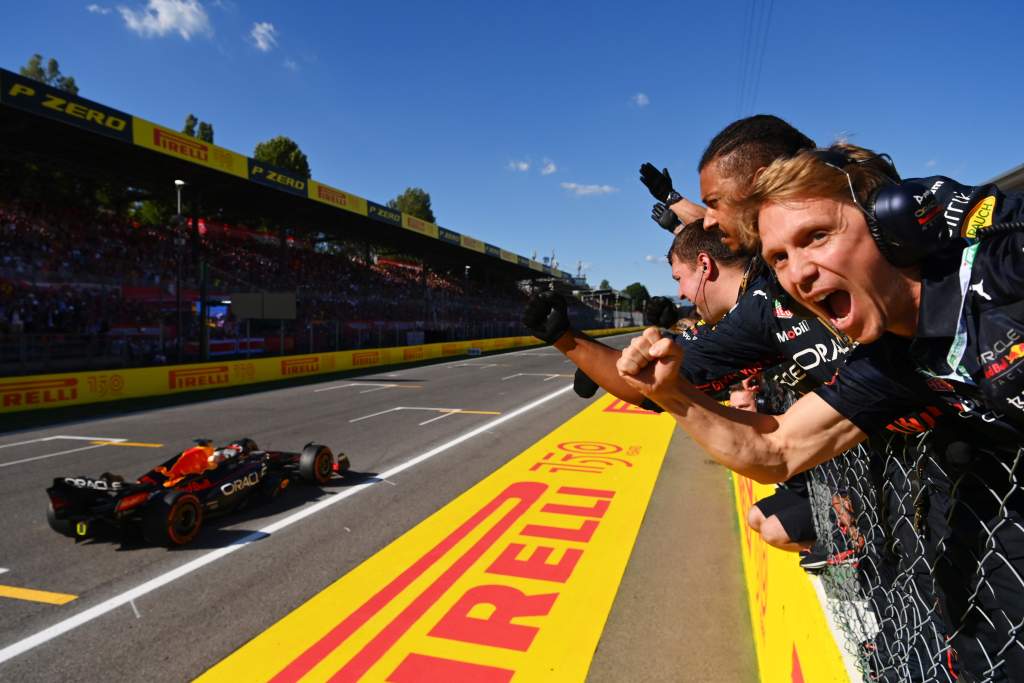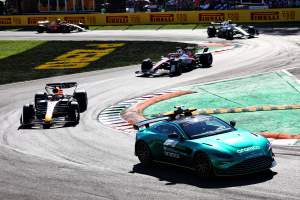Up Next

Formula 1’s anti-climactic yet controversial Italian Grand Prix finish under the safety car was the result of the rules being applied in the consistent manner many have demanded.
Given the criticism directed at the FIA – everywhere from team bosses in the Monza paddock to commenters on social media – it’s worth understanding the rules that meant the race ended the way it did.
Especially as the FIA says there were no delays in any of the race control procedures.
“It felt like the safety car picked up the wrong car,” said Red Bull team boss Christian Horner.
“And that delayed things further for what looked like a reasonably trivial incident.”
The safety car did not pick up the ‘wrong’ driver, as such. It is correct that it did not pick up the leader, Max Verstappen, but that does not mean it was a mistake.
The sporting regulations are clear on this: “The safety car will join the track with its orange lights illuminated and will do so regardless of where the leader is.”
When the safety car was scrambled, Verstappen happened to be halfway around the lap. Second-place man Charles Leclerc was approaching the first Lesmo. George Russell, in third, happened to be emerging from the pits.
It was unfortunate because only five cars were between the safety car and the leader, but the second issue is that they were vastly spread out from Russell exiting the pits and Nicholas Latifi at the second chicane. Then the situation was exacerbated when Verstappen made a pitstop! This dropped him even deeper into the safety car queue.
This meant three things needed to happen before the race resumed.
First, the cars between the safety car and the leader needed to be let past. Second, lapped cars needed to be allowed to overtake the safety car.
Then, the safety car will return to the pits at the end of the following lap.
The speed at which this process was executed has come in for specific criticism, namely from Ferrari’s Mattia Binotto and Horner.
They have a point insofar as it took three laps with the safety car deployed before the signal was given for the cars between the safety car and the leader to be let past.
“That one could have been sorted out in time, it was a case of picking up the wrong car,” Horner insisted.
“The safety car didn’t pick up the leader and that caused a huge delay for them all to have to catch up. You could have at least got one racing lap there and probably two.”

The cars between the safety car and Verstappen were only released once all the cars were finally in a line behind the safety car. This happened even though race control would appear to have discretion at how quickly this can happen.
It is not explicitly stated that the cars must be in a queue. The rules only say: “When ordered to do so by the clerk of the course the observer in the car will use a green light to signal to any cars between it and the leader that they should pass.”
So, why was this not done sooner? Well, the recovery of Daniel Ricciardo’s stricken McLaren was complicated by the fact it was stuck in gear.
It could not be rolled away, it needed a recovery vehicle. That required more workers and a greater hazard.
The Race understands the priority in such scenarios is to maximise the gap on track between cars for recovery work, and for this gap to be created as soon as possible, rather than having cars driving around at random intervals for longer.
The quickest way to do that was to let the cars form a queue regardless of whether the leader was at the front of it.
As Mercedes boss Toto Wolff put it: “There was a car on track. There were marshals. There was a crane. That’s why they didn’t let anybody overtake.”
Once this delay was in effect, there was nothing more race control could do. The cars were released, but they only caught the back of the queue as Verstappen started the final lap.

This meant there was not enough time to then allow lapped cars to overtake and for the safety car to come in at the end of the following lap – let alone for there to be any green flag racing.
There is no mechanism in the regulations for unilaterally throwing a red flag and suspending the race without just cause. So there was no alternative but to finish behind the safety car.
Perhaps the best validation for how the FIA handled this is that it found support from someone who was so badly burned by improper safety car protocol in Abu Dhabi last year – Wolff.
“Whether I’m Abu Dhabi-traumatised or not, these rules have been followed to the dot today,” said Wolff.
“If one is not happy with the regulations and you want to have a big-bang show, two laps of racing and mayhem – I think I’m absolutely up for it.
“But then we need to change the regulations. So I don’t think we should complain about anything that happened because these are the rules.”
And that is the crux of the matter: the rules were applied correctly.
Whether they are fit for purpose is another discussion entirely, one likely to take place in the coming days and weeks among fans and F1 insiders alike.







